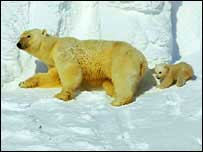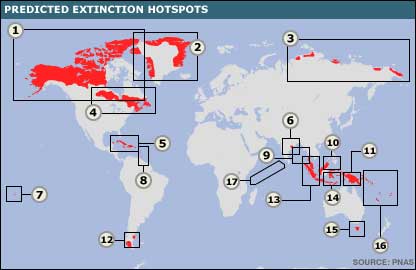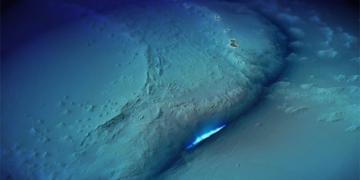 |
| The Arctic Region Has a High Risk of Potential Extinction |
A scientific study indicates that in 20 regions around the world, animal species are not immediately threatened with extinction, but they are at a high risk of being wiped out in the future.
These areas include tundra (permafrost regions) in Greenland and Siberia, the Caribbean islands, and some regions in Southeast Asia.
The research team, based in London, believes that their findings will assist conservation experts in preventing extinction risks through proactive intervention measures.
This research focuses on the concept of “potential extinction risk.”
This means that animal species are not currently threatened and are not listed as critically endangered, which are species recognized internationally as at immediate risk of extinction.
However, human development is causing these species to face extinction rapidly in the near future, placing them among those classified as at higher risk.
“We can see this change occurring, for example, with the Guatemalan red-faced monkey, which was considered low-risk in 2000 but was classified as ‘endangered’ in 2004 due to the loss of nearly all its forest habitat,” said Dr. Marcel Cardillo from Imperial College London, the lead researcher.
“We hope that conservation biologists will use our research findings to prevent the further loss of other species, rather than just focusing on those currently at risk.”
American Bison and Reindeer
 |
|
Large terrestrial mammal species face a higher risk of extinction |
The researchers calculated the potential extinction risks of over 1,500 terrestrial mammal species.
Reconfirming findings from other research groups, this study determined that species particularly at risk of extinction are often large, inhabit small territories, and have long reproductive cycles.
These species include the North American moose, the saiga antelope, the Seychelles flying fox, and the brown hyena.
Interestingly, the identified regions at risk of potential extinction do not include biodiversity hotspots like the Amazon and Congo basins but instead encompass the Arctic regions of northern Canada, northern Russia, and Greenland.
“I was surprised that the study results did not mention the Amazon and Congo basins, which are home to many species living in restricted areas,” noted Thomas Brooks from the Biodiversity Research Center in Washington, D.C., part of the International Conservation Institute.
One reason behind this may be a lack of information. Some data on plants and animals need serious adjustment.
This is a gap that scientific groups led by the World Conservation Society are working to address by improving foundational studies on certain species and ecosystems.
Proactive Conservation
International Conservation is one of the groups advocating for “preventative” programs instead of waiting for only a few species to remain.
“The group is widely recognized as conservation activists, operating wherever we have the opportunity to anticipate situations and implement pioneering measures for conservation,” Dr. Brooks told BBC News.
“Pioneering solutions are often more cost-effective and easier to implement.”
“However, the impact of human activity on biodiversity is such that clearly no conservation program can reverse it.”
Some “last chance” programs have been successful. At Yellowstone National Park, the North American grizzly bear has rebounded and been removed from the endangered species list.
In the UK, the population of the stone curlew has doubled in the last 20 years.
Through the Convention on Biological Diversity, the international community set a goal to significantly reduce the rate of biodiversity loss by 2010.
However, overall, extinction rates are many times higher than the natural rate.
According to the Millennium Ecosystem Assessment, one-third of reptiles, one-fifth of mammals, and one-eighth of bird species are at risk of extinction.
This program also concludes that although humans are the primary cause of extinction, ultimately, it is humans who suffer the most.
 |
|
Hotspots where species are at risk of potential extinction: 1. Northern Canada and Alaska; 2. Greenland; 3. Siberian tundra; 4. Eastern Canada forest regions; 5. Bahamas; 6. Eastern Highlands; 7. Southern Polynesia; 8. Lesser Antilles; 9. Andaman and Nicobar Islands; 10. Borneo, Sulawesi, Moluccas; 11. New Guinea; 12. Coastal Patagonia; 13. Malay Peninsula, Sumatra, and West Java; 14. Nusa Tenggara; 15. Tasmania and Bass Strait; 16. Melanesia; and 17. East Indian Archipelago |


















































